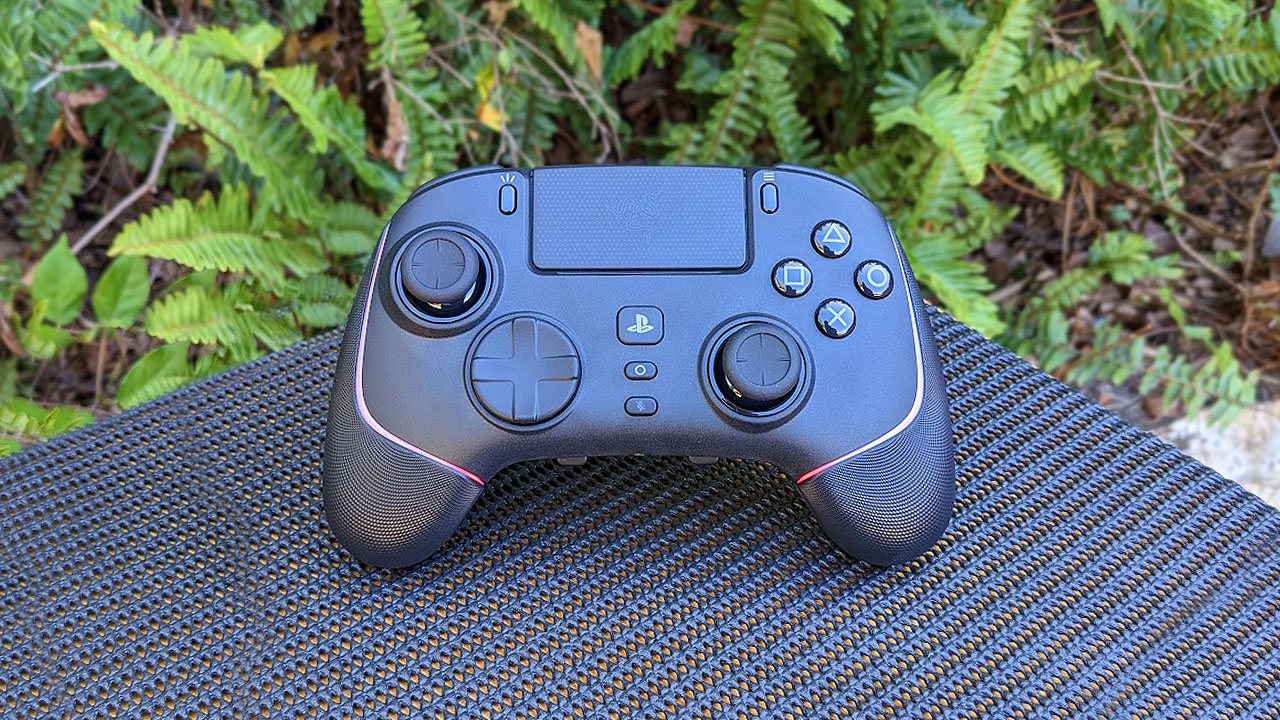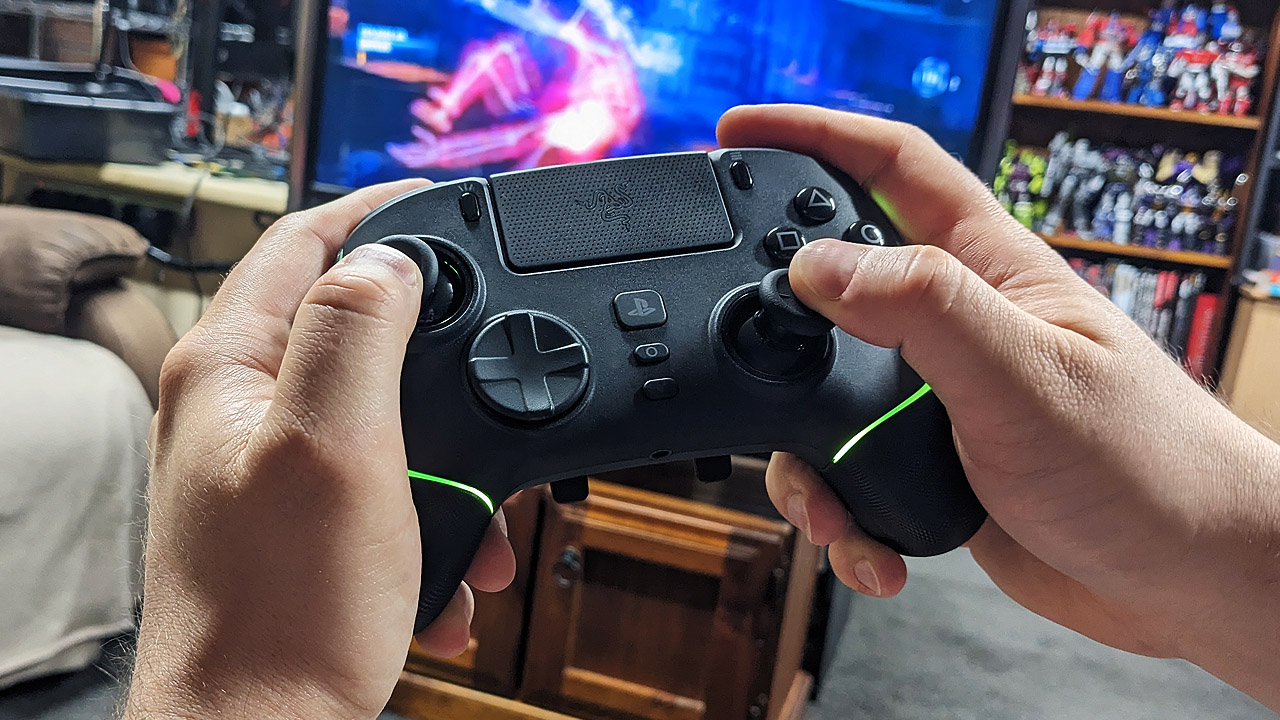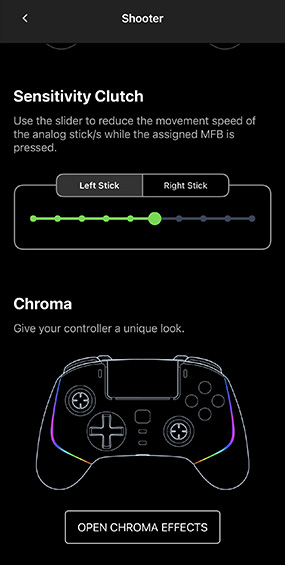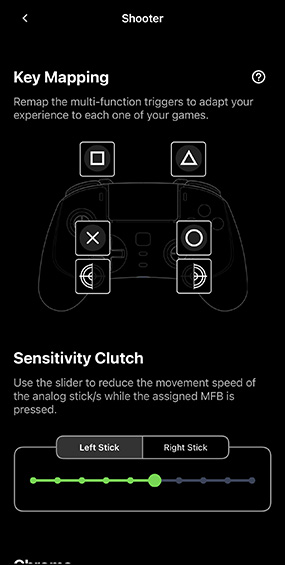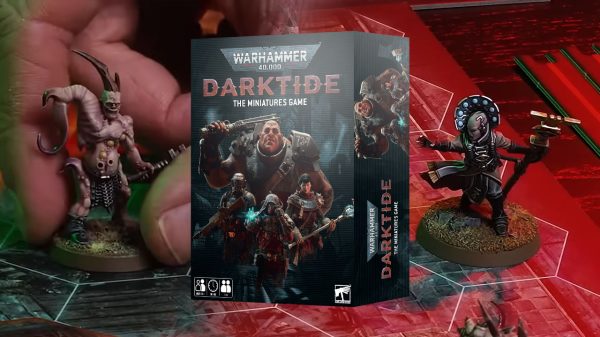Pro controllers are very clearly in season for the PlayStation 5 right now. With the girthy DualSense Edge making its own splash, the third party market has its waves rolling into the shore. The Razer Wolverine V2 Pro is one such clawed contender wading into the surf – but is this offering a matter of sink or swim?
From a purely aesthetic standpoint, it’s a bloody nice controller. Sized beautifully and sitting comfortably in the hands, it follows the Microsoft design principle of diagonal stick placement – rather in the face of its official Sony partnership. These sticks also come with additional options for the sake of control and useability, with longer shafts and even a more rounded thumb grip. A sure hit for mad lads in the FPS space. The textured rubber side grips are a Razer standard, and they feel just as lovely here as they do on their mouse offerings; albeit with a bit more coverage for sweaty mitts. The signature PlayStation peripheral feature is the inclusion of the touchpad panel – which has a far more satisfying click response compared to the squishy nature of the standard DualSense.
My meaty manipulators had a field day
Beyond the standard (and familiar) is the more involved inclusion of additional rear buttons, shoulder nubs and a very neat clicky directional pad. This is a well-trod landscape for more involved gamers, those who have desired a greater level of input from their fantastic phalanges. The layout chosen by Razer here is designed brilliantly to take advantage of natural digit placement. Depending on your platform, these customisable inputs can provide a fantastic convenience or even advantage to elevate your experience. Every button has an extremely mechanical response, super tactile and satisfying – albeit a little louder when compared to your average controller. The main shoulder triggers in particular are impressive, with a physical toggle switch for both left and right options that mechanically shift the response of the triggers from an analogue squeeze to a mechanical click actuation.
From my limited experience with previous rear button implementations, I have always been a little iffy on their overly paddle-like set up, but the Wolverine finds a great middle ground. The topmost rear buttons are simple angular surfaces for your middle fingers to comfortably rest upon, while their neighbours are a little more paddle-like – with a curved cradle-like design that nestles your ring fingers while playing. All of these have a brilliantly engineered tolerance to ensure you only press them when intended – responding with a meaty ‘tuk’ when activated – and the adjustment period for getting used to them was next to nil.
I actually found the shining star of these additional buttons to be the neat little added nubs that rest on top of the controller – snuggled into an apparent deadzone for finger activity between the bumpers and triggers. They really were the only feature that had me puzzled on first inspection. It’s 2023 and the duties of your index fingers for gaming are vast and varied so I was curious how you could ask more of them without ending up in some finger-based confusion. Turns out I don’t give my fingers enough credit, as I came to realise that my fingertips could absolutely hit these neat little nipple-nubs, while the flesh of my under-knuckle reliably bumps the shoulder inputs. They quickly became a go-to option for binding ‘sometimes’ abilities within games, like quick-firing abilities during combat that may be best suited to a specific reaction – all while continuing to use the standard inputs to pummel patsies or blast baddies. Their delightful actuation feels precisely like the buttons on a mouse – snappy and rapid.
It’s hard to find an angle that is unflattering
The controller is effortless to set up, thanks in part to the simple toggle switches on its rear that dictate what platform you are intending to use, and whether it is to be wired or wireless. I was eternally grateful that no software was involved in this process – a fairly innocuous USB dongle is easily slammed into the system of choice and within seconds you’re up and running. Of course I’d have loved for it to pair with the PlayStation without the dongle, so I could leave it stuck in my PC and perhaps enjoy the flexibility of both systems whenever I felt like it, but the Sony partnership clearly doesn’t cover proprietary controller communication. Regardless of this gripe, the controller is communicating via Razer’s ‘HyperSpeed’ wireless tech, meaning that blasting out Mortal Kombat combos feels silky smooth.
Of great interest to me was the battery life of the unit; especially after all the reports of how the DualSense Edge fared. Across multiple days I indulged in controller-based mayhem, reinvigorating my love of Arkham Knight and the tasty bullet-hell title Lone Ruin – daring the controller to fail me. Even with its signature Chroma lighting blasting neon niceness on my beefy manipulators, I didn’t encounter even a low-battery warning after more than 12 hours of gameplay before I absentmindedly plugged in the controller via it’s luxuriously woven USC-C to USB-A cable to see where the heck it might even communicate its current battery level.
With all of its innovations however, there is a noticeable void in regards to both rumble and haptic feedback options. Initially I found myself wondering if the PC titles I was playing did not have rumble implementation, and paid little heed to it – until I set the controller up to work with on my PS5 and dropped a couple of hours into God of War. Drawing a bowstring provided zero feedback, and with no options to tweak or amend this anywhere I was forced to break my cardinal rule of reviewing: I Googled it. What I discovered is that Razer has left these options out entirely, citing that they are ‘of little use in a competitive gaming space.’ While this is a logical explanation, it does err on the side of convenience to leave two of the most costly manufactured elements out of the controller’s production. It left me feeling like something was missing during my PlayStation playtime – the immersive systems that I had grown used to now felt critically absent. In retrospect I do find myself considering that if losing haptic triggers was the price to be paid in exchange for the trigger click-switches, then maybe the monkey’s paw isn’t overtly gnarly.
Finger real estate is generous
Another furled monkey digit may be the price associated with this beast. Clocking in at a cost that actually exceeds the DualSense Edge, it’s sporting a mighty tag of $450ish AUD – landing this gadget squarely in the realm of exceptionally bespoke, premium gaming goodness. Mechanically and materials wise, I can’t openly say it doesn’t feel worth its price tag, but really it comes down to a personal evaluation of how much you may wish to pay for the ‘advantages’ it can offer – especially if gaming means a great deal more to you than just a weekend hobby.
When it comes to software, I am still torn on the use of the Razer Controller app for managing profiles and remappings. It did seem to make a lot of sense to offload the management options for a multi-platform device to your phone – basically meaning that the framework to fiddle with the controller is as separate as the controller itself. However it suffers from that usual curse of wanting a piece of third party technology to be more naturally integrated than it is – desiring options natively found in whatever platform you apply it to. Like the majority of Razer products, I used it in an expressly plug and play sense for a few hours before diving into more involved management options, and it was perfectly fine by every metric – so if you are adverse to random phone apps on your device, you’re in the clear.
The app is a snap to use
Final Thoughts
The Razer Wolverine V2 Pro laser focuses on what is expected of someone playing in a professional space, stripping away superfluous niceties to bulk out a robustly developed nerve centre of inputs. For a long time now the joke has always been that player two is handed the third-party controller, but really the performance (and staggering price) will have you wanting to hoard this one all to yourself.
Review unit supplied by the manufacturer
Click here for information on WellPlayed’s review policy and ethics




Known throughout the interwebs simply as M0D3Rn, Ash is bad at video games. An old guard gamer who suffers from being generally opinionated, it comes as no surprise that he is both brutally loyal and yet, fiercely whimsical about all things electronic. On occasion will make a youtube video that actually gets views. Follow him on YouTube @Bad at Video Games





